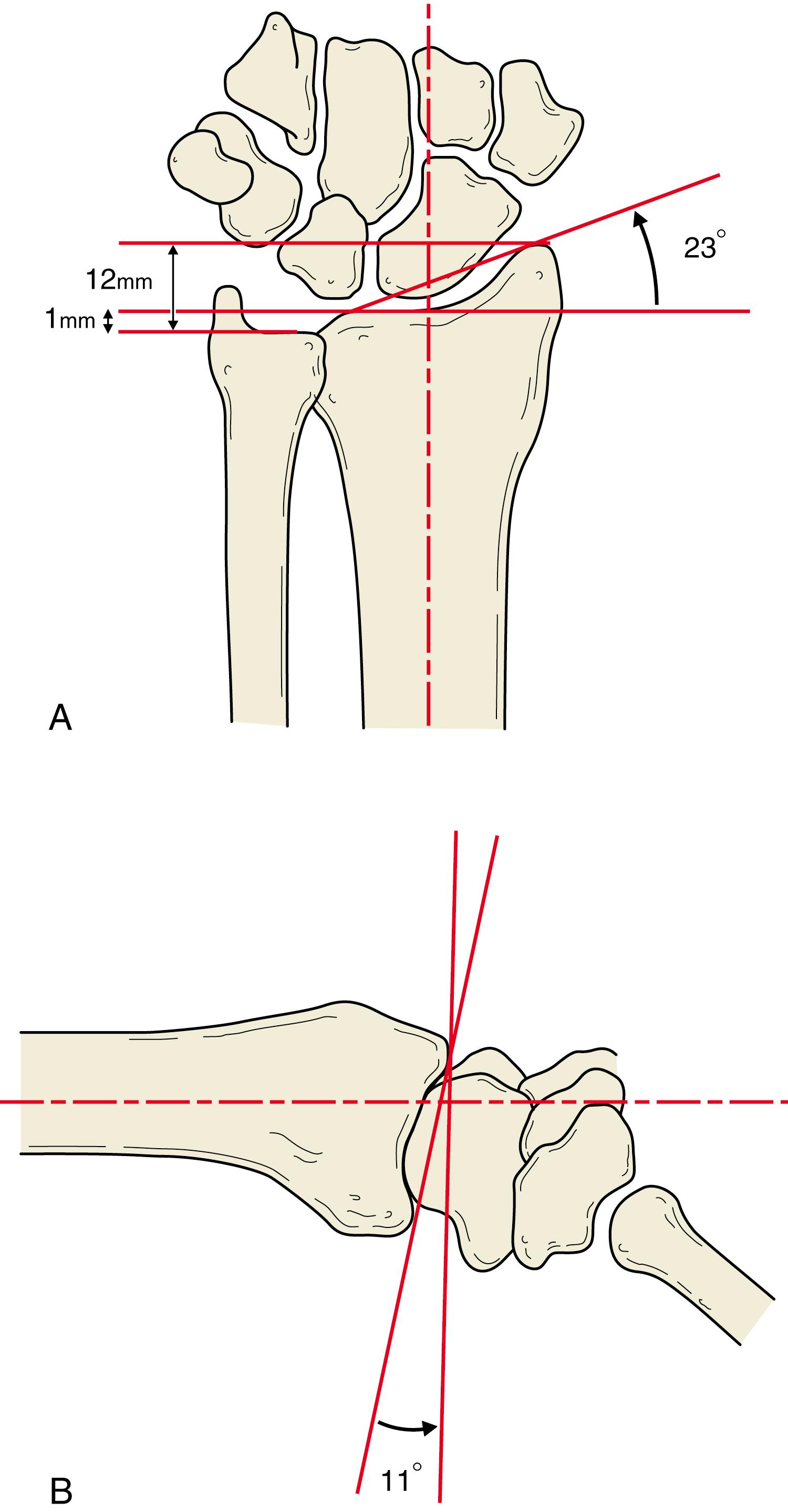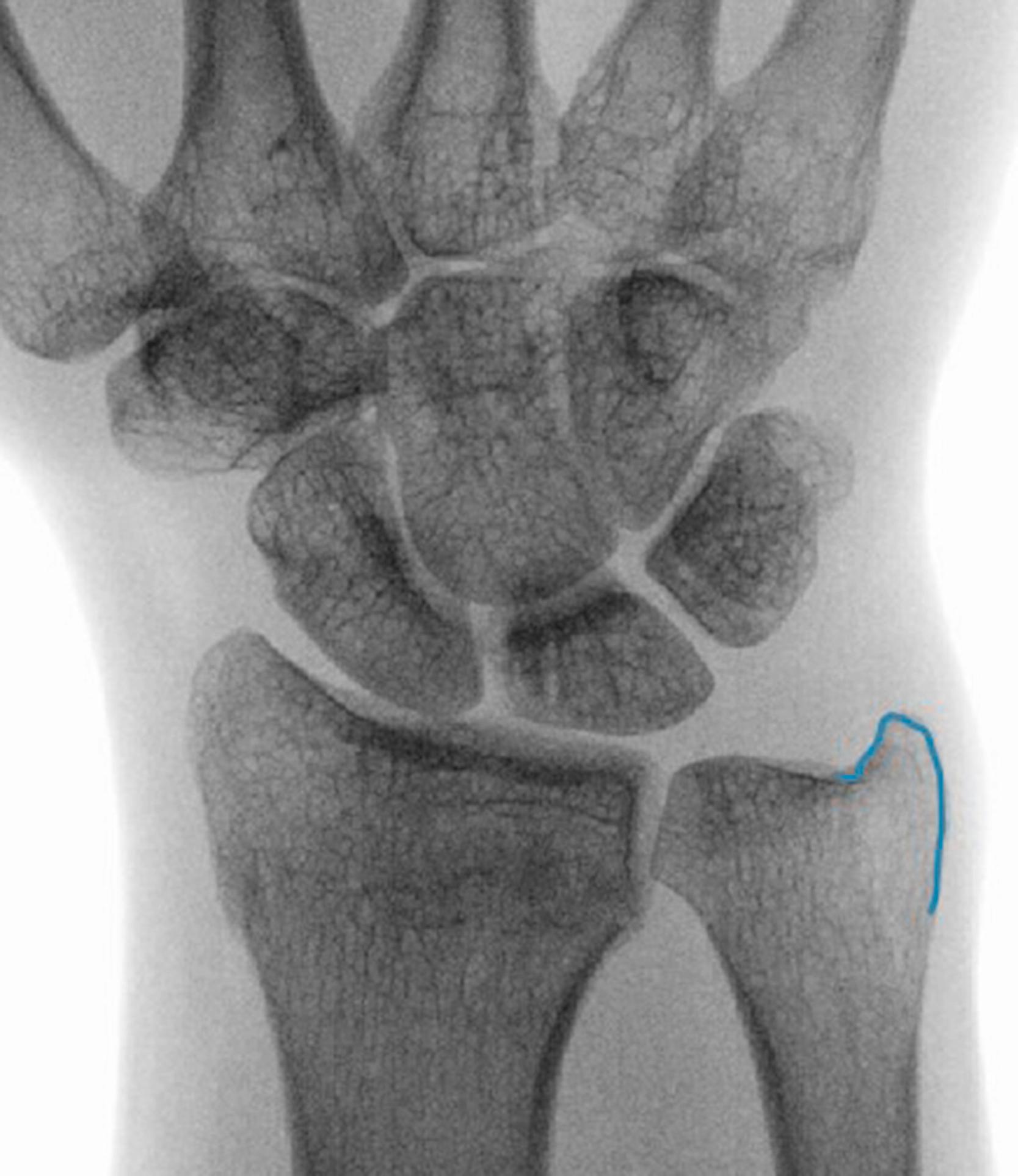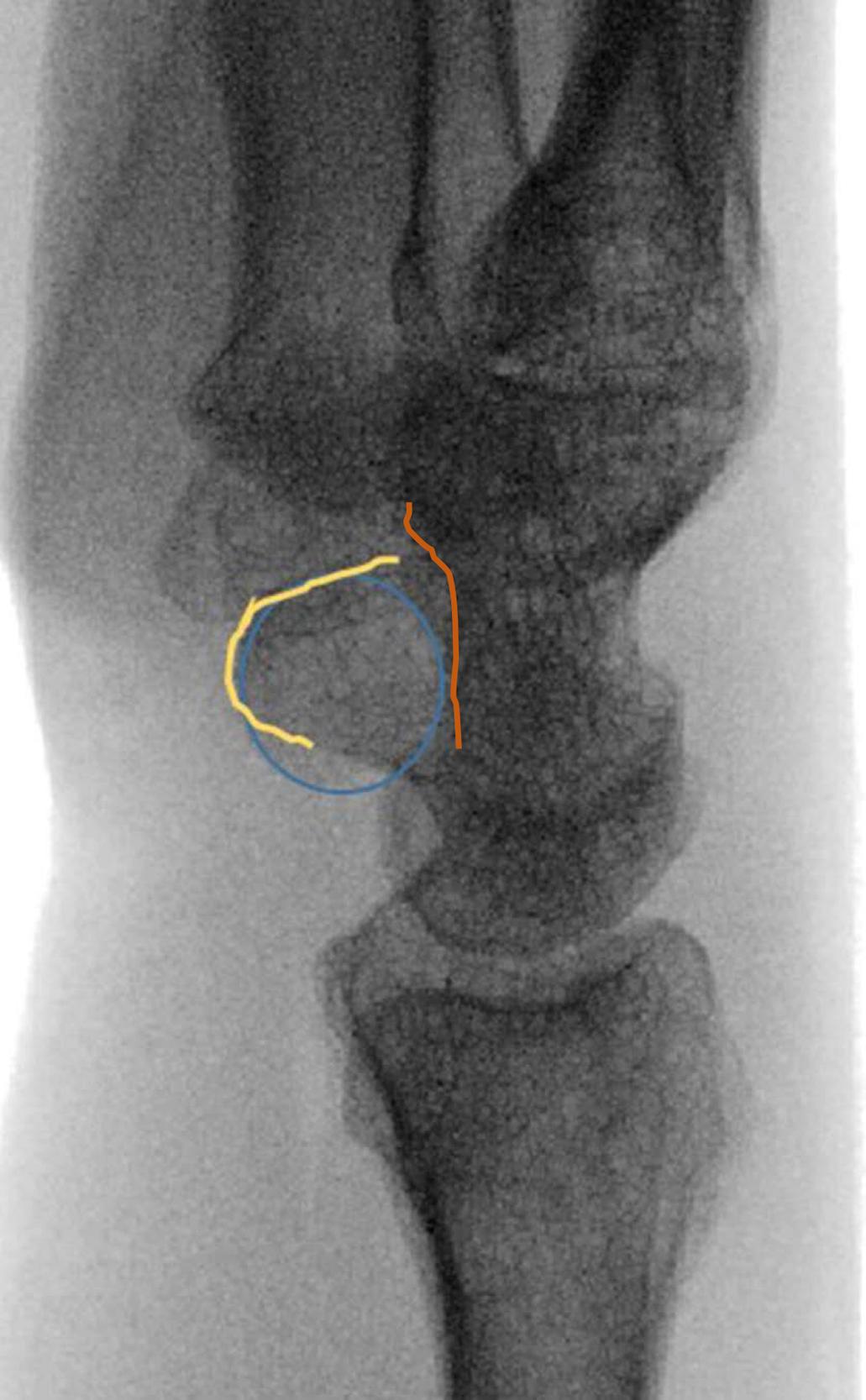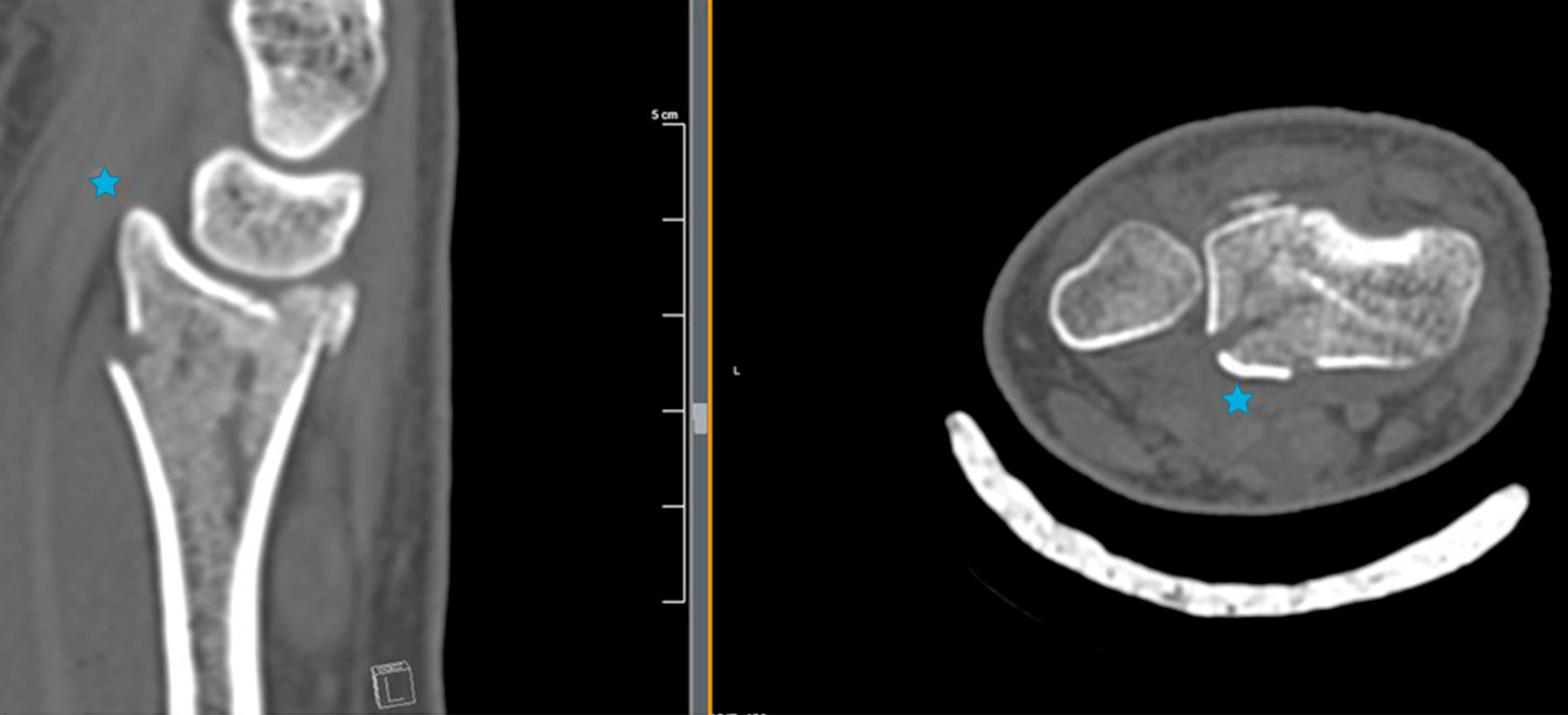Physical Address
304 North Cardinal St.
Dorchester Center, MA 02124
Distal radius fractures are the most common upper extremity fracture in patients in the United States, accounting for 0.7%–2.5% of emergency department visits. , Worldwide, the incidence of distal radius fractures has increased over the past 40–50 years, almost doubling in certain populations. ,
Distal radius fractures occur in a bimodal distribution with the highest frequency in youths under the age of 18 years and a secondary peak in adults over 50 years old. In the older adults, osteoporosis and poor postural stability are associated with these fractures after falls onto an outstretched hand. , Increasing age and obesity levels are risk factors for more complex injury patterns. Distal radius fractures in young patients usually occur in the setting of play or sports and account for 23% of all sports-related fractures in adolescents.
Regardless of patient age, comorbidity burden, or fracture pattern, the overall principles in management remain the same. First, the fracture must be stabilized and any secondary injuries evaluated. Next, the determination of operative versus nonoperative treatment must be made. Currently, the most common surgical procedure for distal radius fractures in adults is open reduction and internal fixation with a volar plate, but the specific procedure should be tailored to individual patients and their injuries.
The distal radius has three articular surfaces: the scaphoid facet, the lunate facet, and the sigmoid notch, which articulate with the scaphoid, lunate, and distal ulna, respectively. Several measurements describe the normal distal radius: height (radial styloid 12 mm longer than the ulnar corner of the lunate facet), lateral tilt (11 degrees volar), radial inclination (22 degrees), and ulnar variance (the length of the radius relative to the ulna, with neutral to ulnar negative being normal) ( Fig. 60.1 ). After a fracture, changes from these normative values or changes compared to the contralateral, uninjured radius are assessed and often guide the decision to pursue operative versus nonoperative management. Decreased radial height and inclination result in a hand that appears radially deviated with increased prominence of the ulnar head. Altered lateral tilt of the articular surface may produce visible deformity, but this alteration of the normal anatomy is more important as a cause of adaptive midcarpal instability, which is one cause of long-term wrist pain secondary to the malalignment between the lunate and capitate. When clinically relevant changes in lateral tilt or radial length occur, patients may also experience restricted forearm rotation secondary to altered distal radioulnar joint (DRUJ) mechanics. Finally, loss of radial length producing an ulnar positive wrist increases the chances of patients developing symptomatic ulnar impaction syndrome.

The median nerve and flexor tendons for the fingers course volar to the distal radius. Distal radius fractures increase the pressure within the carpal tunnel, a finding potentiated by immobilization in a position of wrist flexion. Excessive pressure may produce symptomatic carpal tunnel syndrome that may necessitate emergent release or contribute to the development of complex regional pain syndrome (CRPS).
In the setting of a distal radius fracture, soft tissue injuries to nearby structures are common. Most frequently occurring is an injury to the triangular fibrocartilage complex (TFCC), which comprises the meniscal homolog triangular fibrocartilage, the dorsal and volar radioulnar ligaments, the ulnar collateral ligament, the extensor carpi ulnaris (ECU) subsheath, and the origins of the ulnolunate and ulnotriquetral ligaments. The second most frequent is injury to the scapholunate (SL) ligament, which is a C-shaped structure that consists of dorsal, volar, and proximal portions, and is essential to providing intracarpal stability and preventing dorsal intercalated segmental instability. Lunotriquetral (LT) ligament injuries are also possible. This is also a ligament that has dorsal, volar, and proximal components, and injury to this ligament can result in volar intercalated segmental instability. Hanker et al. reviewed the cases of 173 athletes presenting with distal radius fractures. The most common soft tissue injury was TFCC tears in 61% of patients, followed by carpal instability in 20%, and DRUJ instability in 9%. Studies performed to document the incidence of associated carpal pathology consistently report a high incidence from 68% to 98%. Although these associated injuries are often partial or low-grade injuries that do not require dedicated treatment, surgeons should remain aware of the potential of clinically relevant associated injuries when screening for these associated injuries on physical and radiographic examination.
Initial assessment begins with assessing the skin about the wrist to confirm that it is a closed injury. This should be followed by a thorough neurovascular assessment with evaluation of the radial and ulnar arteries, as well as the median, radial, and ulnar nerves. After assessing for neurovascular injury, distal radius fractures require lateral and posteroanterior (PA) radiographs. A standard PA radiograph should profile the ECU tendon groove, which should be at the level of or radial to the base of the ulnar styloid ( Fig. 60.2 ). A true lateral radiograph is defined by the relationship of the scaphoid, the pisiform, and the capitate. An acceptable position is when the volar cortex of the pisiform lies between the volar cortex of the distal pole of the scaphoid and the volar margin of the capitate head ( Fig. 60.3 ). If the pisiform is dorsal to the distal scaphoid pole, then the arm is overly pronated, and if the pisiform is volar to the distal scaphoid pole, then the arm is excessively supinated. Additionally, because of the normal 11 degrees of volar tilt, a true lateral X-ray does not allow for assessment of the articular surface. To account for this, Medoff suggested a 10-degree lateral X-ray. This positioning profiles the distal radius’ articular surface and allows the surgeon to assess the dorsal and volar rims.


For complex distal radius fractures with a high degree of comminution and/or intra-articular extension, computed tomography (CT) can allow for a detailed understanding of the fracture fragments ( Fig. 60.4 ). This advanced imaging can provide assistance in surgical planning with regard to fixation method and surgical approach.

Fractures are examined for displacement according to the normative values for radial height, length, inclination, and lateral tilt. The articular surfaces of the radiocarpal joint and the DRUJ are assessed for step-off and gapping. Loss of normal alignment with articular incongruity over 2 mm, radial shortening over 3 mm, or dorsal tilt over 10 degrees generally requires reduction. Failure to obtain or maintain reduction better than these parameters is an accepted indication for operative treatment. Obviously, patient-specific needs and comorbidities influence the ultimate treatment decision and the standard parameters may provide less guidance in the older adult.
As of 2016, there were at least 15 fracture classification systems for distal radius fractures. Several recent studies have found that not one of them provides enough reliability, reproducibility, or clinical usefulness to become the dominant method for describing distal radius fractures. , Still, for completeness sake, we will succinctly describe several of the more common classification systems.
Historically, certain common fracture patterns were described by surgeons, whose names then became eponyms for those patterns, all of which are still used today. Most common is the Colles’ fracture which was described by Dr. Abraham Colles in 1814 and refers to an extra-articular, dorsally displaced metaphyseal fracture with radial shortening. Then, in 1838, Dr. John Rhea Barton described an intra-articular distal radius fracture with either volar or dorsal displacement of the respective lip, now referred to as a volar or dorsal Barton’s fracture. Finally, in 1847, Dr. Robert William Smith classified extra-articular volarly displaced distal radius fractures, which are now called Smith’s fractures.
The Frykman system is based on whether or not the fracture lines extend into the radiocarpal and radioulnar joints, as well as the presence of an associated ulnar styloid fracture. Emphasis on this system was based on the presence of intra-articular extension to the DRUJ portending a poor outcome.
The Melone classification focuses on intra-articular distal radius fractures and highlights the importance of four fragments in these fractures: the radial shaft, the radial styloid, the dorsal ulnar fragment, and the volar ulnar fragment. Particular emphasis is placed on the volar ulnar fragment and its significance in achieving an anatomic reduction. This classification system is also the basis for fragment-specific fixation of distal radius fractures.
Become a Clinical Tree membership for Full access and enjoy Unlimited articles
If you are a member. Log in here